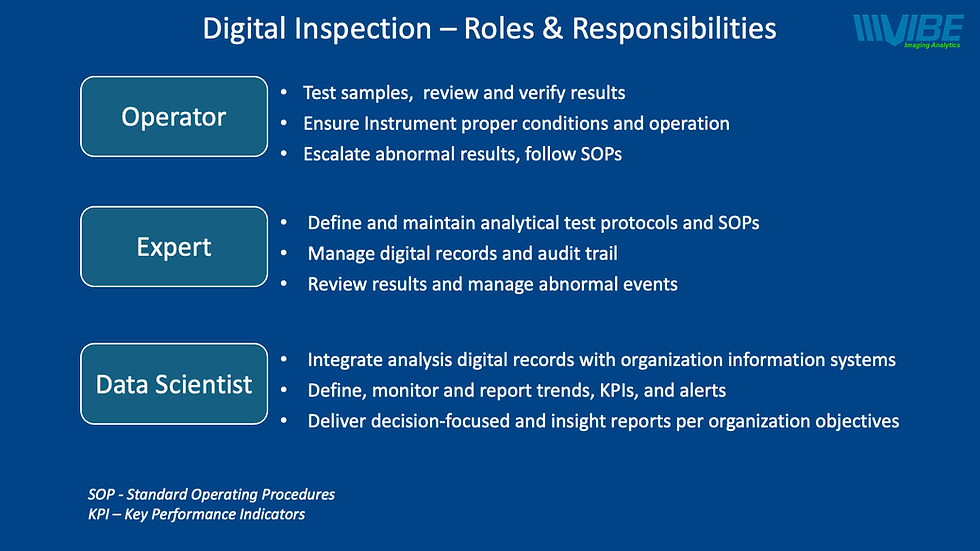The Secret of Basmati Rice
- "The Grain Guru"
- Sep 5, 2020
- 3 min read
Updated: May 15, 2022

The Basmati rice name is like Champaign, geography exclusive. Basmati rice can grow in specific districts of India and Pakistan. The prices of Basmati rice are about 3X higher than long grain. It creates a good motivation to blend (mix) lower-cost varieties or lower grades rice to maximize seller profit. Food companies are at the end of the supply chain starting from the farmer, trader, processing, packing, and logistics companies may be exposed to a higher financial and regulatory risk. Food companies produce the final product, closer to the consumer demanding taste and consistency, and exposed to FDA regulations. The current manual inspection to identify non-Basmati rice is not sufficient. According to the government of India, a precooked milled Basmati rice length must be at least 6.61 mm and width of 2mm. One method is to handpick 10-20 kernels from a sample and measure the length and width of each kernel with the caliper and calculate the average values, the other method is to put 15 kernels in a row, measure the total length, and dived by 15 to calculate the average length. Same with the width measurement. A sample of 20 g has about 1,200 kernels so practically and statistically these outdated methods cannot provide accurate information and indication on blending level and use the results as evidence and for communication with the seller normally based overseas.

To calculate the potential loss for the buyer, we used three levels of blending and approximate numbers.
• Basmati price, 1,500 USD per MT (Metric Ton)
• . Non-Basmati, Long grain price 500 USD per MT
• . 20’ Container carry 25 metric tons
• . The value of the Basmati rice of one 20’ container is 37,500 USD
• . Prices are FOB, without logistics costs
• . We reduced the value of non-Basmati rice from the net loss
Blending Rate. Net Loss
5% $1,250. (5% X 25 MT = 1.25MT X $1,500= $1,875 - $625 = $1250 )
10% $2,500
20% $5,000
The Vibe QM3 Measures and Analyzes each grain in the sample, then it classifies, visualizes, and reports on a grain and sample level. In this test, we used Length, Width, and Length to Width Ratio to classify each grain in the sample. The results provided by count, percent of the count, and as a percent of the total weight. The process is very simple, it requires the operator to place the sample on a tray and click Analyze. The instrument can work in a lab, processing line, or warehouse environment. The QM3 Analysis report on operator level two numbers: % of Basmati and % Non-Basmati with access to more relevant information such as sample kernel-level data and sample statistics. The Test Calibration was developed by our customer using easy to use wizard software program and provides 99.5% accuracy, repeatability, and reproducibility on a sample level. For a sample of 20 grams, the total Analysis time from the start to the end was 15 seconds.
In the example below, we used two samples of rice, Basmati, and Long Grain non-Basmati rice, and measured the actual value of each rice kernel plus the sample statistics results. Then we mixed the two samples and ran the analysis again.

The four graphs below report on the Basmati and non-Basmati samples’ average values. The orange line represents the Basmati rice and the blue line represents the non-Basmati rice. The results show that there is a clear difference between the two samples, the Basmati rice is longer and thinner, the length to width ratio is significant but the average area is the same in both samples

Summary
The impact of blending on the supply chain and food companies is significant. It affects the final product quality and consistency in addition to the financial and regulatory risk. Digital inspection is essential to monitor the quality of each rice shipment, it is important to increase the size of the samples to a much larger number, in addition, using a digital Certificate of Analysis with images and measurements records will improve the communication between the sellers and buyers. Digital inspection ROI (Return on Investment) is clear and simple to calculate and it will change the business environment from "all you can catch" to transparent and fair trading and pricing. it will reduce the business risk across the supply chain and will drive to higher efficiency for everyone.
We hope that you enjoy reading this article. Please share it with your friends and colleagues. We are available to have a discussion, change ideas, and explore new opportunities.
Ron Hadar
ron.hadar@vibeia,com




Comments